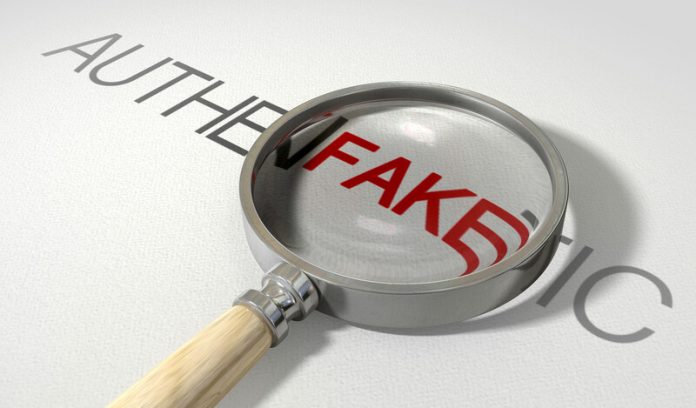This article is written by Anindita Deb, a student of Symbiosis Law School, Noida. The objective of this article is to discuss the counterfeit culture grasping its roots in India and what are the legal provisions attached to it.
Table of Contents
Introduction
Walking through Sarojini Nagar, you’ll hear numerous vendors call out to you claiming they have the exact copy of the ABC brand. A friend of yours who has an annual income of Rs. 3 Lac owns the latest model of iPhone which he claims to have bought at only Rs. 20,000. These are called the first copy of goods, which is costlier than the second or third copy that can be bought at much cheaper prices. These copies of goods constitute the majority of the consumer goods market, encouraging a culture that is referred to as counterfeiting.
Counterfeiting and counterfeit goods
Counterfeiting involves the manufacturing or selling of goods under a brand name without the brand’s permission. Counterfeit goods are usually manufactured using lower-quality materials but are made in a manner so as to imitate the goods produced by a brand (usually higher-priced or luxury brands). Countless sectors are impacted by counterfeit goods, including fashion, accessories, music, software, pharmaceuticals, and cigarettes, as well as vehicle and airplane components, consumer goods, toys, and electronics. The biggest impact of the counterfeit culture, however, can be seen in the consumer goods sector, especially the fashion industry. India has turned out to be a hotspot for counterfeit goods in recent years, with almost all the cities boasting of a marketplace that sells premium brand products at much cheaper prices.
Counterfeiting in daily goods such as food, beverages, medicine, auto parts, cosmetic products, and software is the main source of concern. Almost a third of each of these categories is infested with counterfeits, causing sleepless nights for market leaders who are always easy targets for counterfeiters.
Impact of counterfeiting on the Indian economy
Every year 8 June is observed as the World Anti-Counterfeiting Day. This year on this occasion, the Authentication Solution Providers’ Association (ASPA), which is a self-regulated industry body of anti-counterfeiting and traceability solutions, released the latest edition of its report “The State of Counterfeiting in India-2021”. The goal is to raise awareness among industry stakeholders about the fight against counterfeit goods.
The report examines and discusses trends in counterfeiting occurrences recorded in India from January 2018 to December 2020, with a focus on incidents reported in 2020. Counterfeiting cases have increased rapidly/consistently in recent years, according to the research. In the last three years, there has been a 20 percent increase in the number of counterfeiting occurrences reported (from January 2018 to December 2020). In comparison to 2019, the number of recorded occurrences has grown by 17% in 2020.
While counterfeiting is a global problem that has touched every economy in the globe, the recent trends are concerning for the Indian economy and its citizens’ lives. It has been observed that criminals are contaminating the market by selling fake and substandard products, endangering the lives of our paramedical professionals, security volunteers, patients, and society at large, by taking advantage of the high demand for medicines, health supplements, safety products, hygiene products, and other essentials created by the COVID crisis.
There has been an increase in ‘unsophisticated’ frauds in recent years. The COVID-19 epidemic has also demonstrated how criminals adapt swiftly to changing trade environments and discover new ways to infiltrate legitimate supply chains with counterfeit and frequently hazardous items.
There has been an increase in ‘unsophisticated’ frauds in recent years. The COVID-19 epidemic has also demonstrated how criminals adapt swiftly to changing trade environments and discover new ways to infiltrate legitimate supply chains with counterfeit and frequently hazardous items. Professional scammers are now using new-age manufacturing and printing technology to imitate finishes, print boxes, labels, codes, and packaging that perfectly resembles genuine products. For the ordinary customer, fakes go by nearly undetected. Increased occurrences of fraud, such as diversion, counterfeiting, and black marketing of pharmaceuticals and other necessary commodities, are adding to the issues faced by our healthcare workers, who are already overworked due to a personnel deficit. A number of incidents of counterfeit COVID-19 medicine have been detected in recent months.
According to the ASPA report, alcohol, cigarettes, FMCG packaged goods, currency, and pharmaceuticals are the top five industries that have been hit the worst. More than 84 percent of all counterfeit instances are recorded in these industries. During the COVID-19 lockdown, there was a significant increase in offenses involving illicit liquor, cigarette smuggling, and medicinal supplies, particularly PPE kits and sanitizers. Tobacco products now have the most significant growth in 2020 compared to 2019 and 2018. Between April 2020 and February 2021, Indian officials recovered illegally imported cigarettes worth Rs 1,772-crore, according to a query response raised in the Lok Sabha. In the preceding financial year, seizures of Rs 187.6 crore were made.
Uttar Pradesh, Rajasthan, Madhya Pradesh, Jharkhand, Haryana, Bihar, Punjab, West Bengal, Maharashtra, and Odisha are among the top ten states that require immediate attention owing to counterfeiting incidents, which necessitate a more detailed analysis of the problem, as well as stringent anti-counterfeiting policy mechanisms and implementations.
Counterfeiting isn’t restricted to high-end luxury goods. Criminals are increasingly reported counterfeiting common everyday commodities such as cumin seeds, mustard cooking oil, ghee, hair oil, soaps, infant care, and medicine.
Growing trends of counterfeit culture in the fashion industry
One of the key benefits that can be enjoyed by owning a trademark to a good or service is the element of monopoly that comes with it. The fact that a trademark holder has an exclusive proprietary right in his or her trademark which conveys the source of the goods or service being purchased/availed to the consumer who encounters it, exclusivity benefits both the trademark holder and the consumer. In the fashion sector, when wearing or possessing products of a certain brand is closely connected with an individual’s position, eminence, and desirability, the necessity for monopoly becomes even more vital. Brands such as Louis Vuitton, Bulgari, Gucci, Prada, Hermes, Rolex, etc. are examples of ‘luxury brands’ that promise to confer a sense of power and status on the person wearing these brands as a result of their immense reputation, which has been built up over decades in some cases. With the growth of technology, customer brand recognition has become an important aspect of earning revenue for both small businesses and large corporations. Furthermore, with many e-commerce websites and expanding accessibility to a broad consumer base, significant players in the clothes and accessories business have had to construct a unique narrative to attract consumers to want their brand. As a result, brands, particularly in the fashion industry, have sought the help of loyalists or ‘influencers’ (as they are known on social media) to promote or advocate their products with the goal of ‘influencing’ consumers’ opinions in their favor. However, brand owners are learning that the faster their brand accomplishes the result of ‘trending’ on social media, the faster it becomes a target for large-scale counterfeiting.
Counterfeiting in the fashion business is divided into two types: deceptive and non-deceptive. Deceptive counterfeiting happens when a consumer is unaware that he or she is acquiring a fake or fraudulent good, while on the other hand, non-deceptive counterfeiting occurs when a consumer purchases a replica of the original product knowingly and with complete knowledge.
Consumers in the fashion industry, in particular, have indicated a preference for counterfeited products, or ‘knock-offs’ (in popular parlance), despite knowing that the products they are purchasing are of lower quality and durability. This is likely due to the fact that the pricing of these counterfeit goods has been lowered by 60-70 percent, combined with the displaying of a popular brand or a popular attribute of a brand while one wears or carries these counterfeited goods.
The rampant trend of counterfeiting of garments and accessories in India is assumed to be a result of increased counterfeit manufacturing in the Southeast Asian Region. Notably, the national capital alone has bustling markets selling counterfeit items in the open, with brands such as ‘GUCI’, ‘ABIBAS,’ and ‘FUMA,’ among others. Due to the strong demand for these products among consumers and the fact that these marketplaces have existed for decades, law enforcement agencies have been unable to do much to combat the counterfeiting problem, which has been on the rise in India.
Legal provisions against counterfeiting goods
Indian law does not have a specific set of laws dedicated to dealing with the counterfeiting of goods. However, there are certain provisions that might come to the rescue of brand owners who wish to file an action against the sale of counterfeit goods under their brand name.
The owner of the brand or the rights holder has rights under Indian trademark laws under the law of “passing off.” Passing off refers to the manufacturing of goods under the same or similar brand name in order to profit from the brand’s goodwill. India is also a member of the agreement on Trade-Related Aspects of Intellectual Property Rights (TRIPS). Article 51 of the TRIPS Agreement defines ‘Counterfeit trademark goods’ as items that bear a trademark that is similar to, or cannot be distinguished in essential aspects from, a registered trademark without authorization. TRIPS Article 61 stipulates that member nations must provide for criminal proceedings and sanctions in cases of willful trademark counterfeiting or commercial copyright piracy.
The IP Rights (Imported Goods) Enforcement Rules, 2007 and the India Customs Act, 1962 allow trademark, design, and brand owners to register their rights with Indian Customs Authorities for the seizure of imported counterfeit goods. Counterfeit products are per se prohibited items under the Customs Act, thus the Authority will notify the rights holder of any imported goods, which will be destroyed in front of the rights holder if determined to be fake. In some cases, even if the rights holder has not registered with the Authority, the Authority will notify them. Counterfeiting and piracy are cognizable offenses in India, which means that law enforcement has search and seizure powers.
Sections 102, 103, and 135 of the Trademarks Act of 1999, which deals with falsification and false application of a trademark, can be used as remedies against infringement and counterfeiting. Section 103, for example, makes counterfeiting punishable by three (3) years imprisonment and a fine of up to two lakh rupees if it is proved that a person has falsified goods under the provisions of Section 102. Section 135 provides relief in suits for infringement or passing off.
In India, counterfeiters of spurious drugs are held liable under the Drugs and Cosmetics Act, 1940 (DCA). According to Section 17B, ‘Spurious drugs’ are defined as those that are deliberately and fraudulently mislabelled and created to deceive patients by concealing their identity, source of manufacture, and content, in order to profit from the popularity of fast-moving branded or generic medicines. Offenses are cognizable under the DCA and offenders may be prosecuted under the Indian Code of Criminal Procedure, 1973. The DCA allows law enforcement to inspect, seize, and confiscate any fake, adulterated, or misbranded pharmaceuticals.
Steps taken by marketers to combat the counterfeit culture
Hindustan Unilever (HUL) uses a three-pillar strategy to combat counterfeiters as part of its Combating Unfair Competition (CUC) program:
- Creating a dedicated team with adequate money and resources;
- Educating consumers about IPR; and
- Working with the government on regulation and enforcement.
The onus is not solely on the government, which is why HUL observes World Intellectual Property Day and World Anti-Counterfeiting Day every year to raise awareness about IPRs.
Brands are also becoming more aware of internet counterfeiting. Brands aren’t the only ones who are adopting technology-based solutions. Two government agencies have implemented on-spot solutions, which include a unique QR code embedded in product packaging that can be scanned using the same app or a standard QR code reader in real-time to check product authenticity. Several other market giants hire private investigators to go after counterfeiters.
Conclusion
In the age where maintaining a social image is being given so much importance, people tend to move to counterfeited goods more easily in order to appear to maintain a standard of purchasing that is much beyond their affordability. Peer pressure and the fear of being the one who is left out from social circles because of standards have attracted more customers to adopt the counterfeit culture. As a result, the market for counterfeit goods has grown substantially over the years. There are certain legal provisions that can be used to combat this growing concern that exploits popular brand names. However, a more stringent legal framework is required to put an end to this practice that is taking roots in the Indian economy.
References
- https://www.printweek.in/news/counterfeiting-incidents-up-by-20-in-three-years-aspa-report-54707
- https://www.mondaq.com/india/trademark/845644/faking-it-in-fashion
- https://www.mondaq.com/india/trademark/920436/covid-19-counterfeit-products-and-fake-goods-indian-law-perspective
LawSikho has created a telegram group for exchanging legal knowledge, referrals, and various opportunities. You can click on this link and join:
https://t.me/joinchat/J_0YrBa4IBSHdpuTfQO_sA
Follow us on Instagram and subscribe to our YouTube channel for more amazing legal content.
 Serato DJ Crack 2025Serato DJ PRO Crack
Serato DJ Crack 2025Serato DJ PRO Crack











 Allow notifications
Allow notifications



